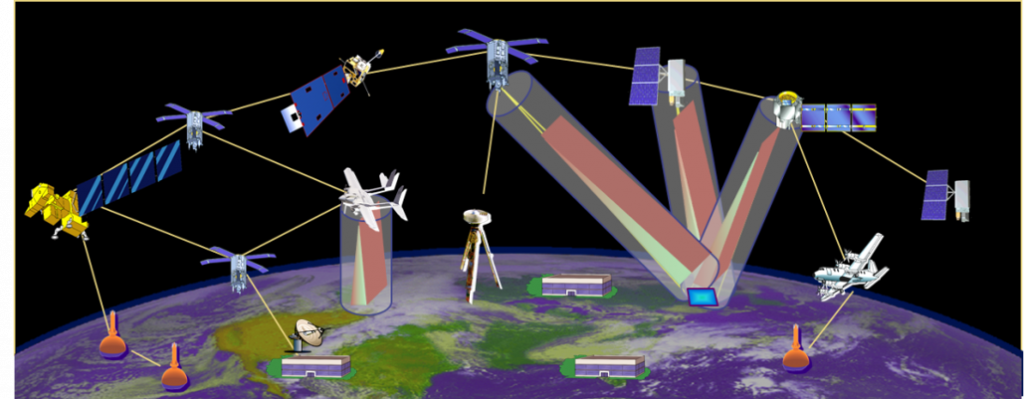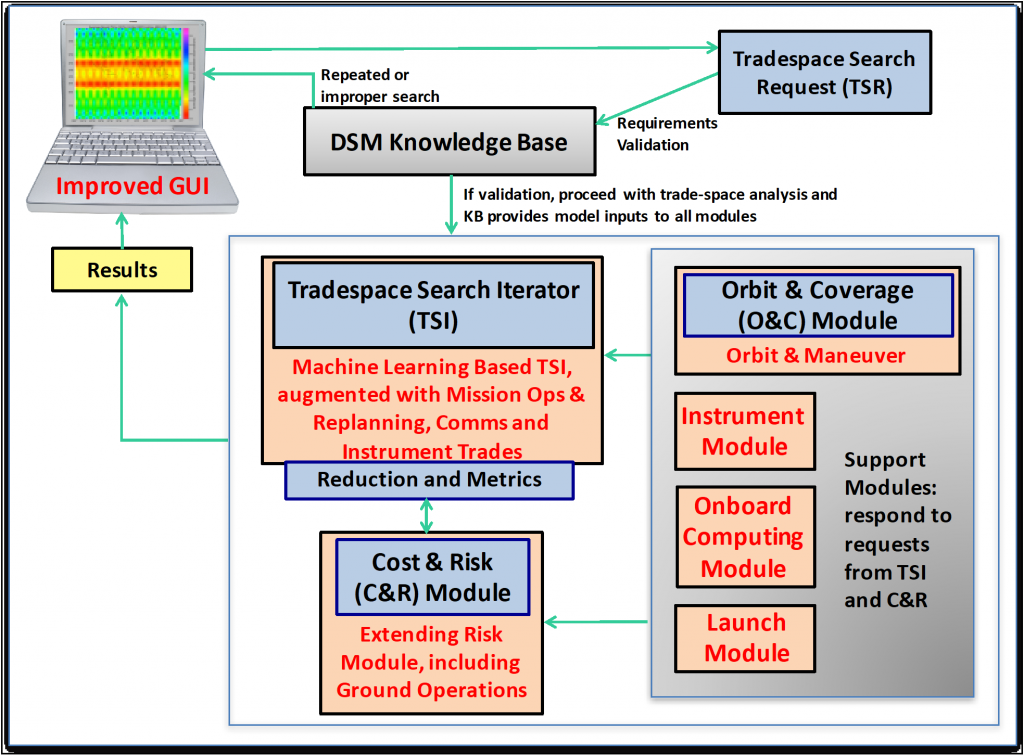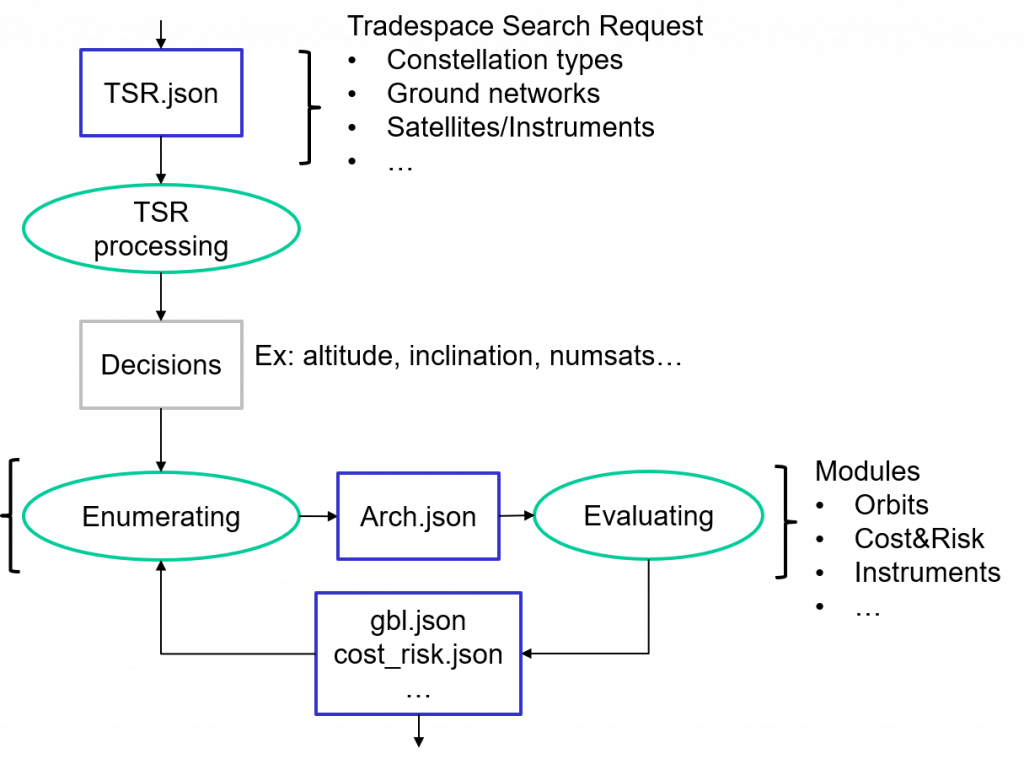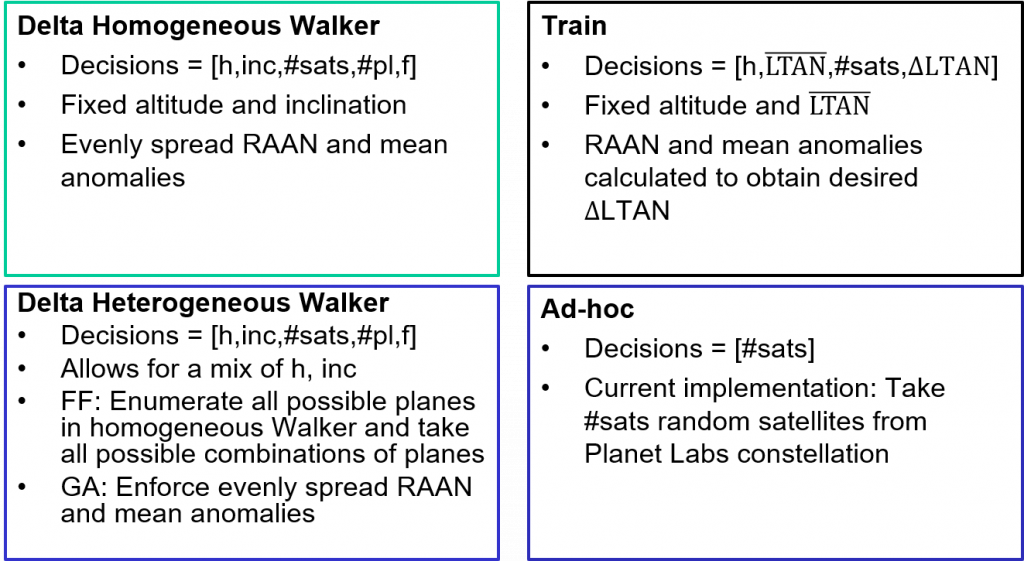Distributed Satellite Missions (DSM) will play a role in future Earth observing systems. Everyday we are getting a little closer to the concept of a sensor web for Earth observation, in which heterogeneous sensors hosted on a variety of platforms including space, air and ground assets share information in real time and make coordinated autonomous decisions to maximize scientific value.

However, the current tools that we use in Pre-Phase studies are not well suited for DSM. In Pre-Phase A, we need tools that can evaluate a large number of alternatives in a relatively short time, to inform feasibility studies, trade studies and what-if analyses. However, compared to traditional monolithic missions, DSM have a high number of vehicles to simulate, and a very large number of alternatives due to combinatorial explosion of the design space. These two factors significantly increase the computational cost of the study.
The Tradespace Analysis Tool for Constellations (TAT-C) was developed under a NASA AIST14 grant to address this need. An early version of TAT-C developed by a team led by NASA GSFC contained an orbits module to propagate satellites and calculate coverage metrics and a cost and risk module. However, the search strategies were limited to brute-force, full-factorial enumeration of the design space, or fractional factorial approaches that are not very good at finding the best designs efficiently.
This motivated the proposal of TAT-C ML, a new version of TAT-C that, among other things, incorporates some of our lab’s intelligent search strategies combining genetic algorithms and machine learning. The basic idea is to make the search as efficient as possible by using the expert knowledge NASA scientists and engineers have. Luckily, our work on using evolutionary algorithms and adaptive operator selection with a set of knowledge-directed operators perfectly fits the bill. This work is funded by a NASA AIST16 grant.
The overall software architecture for TAT-C ML is shown below.

Our role in this project is to develop the Tradespace Search Executive or TSE. The goal of the TSE is to guide the search process, by iteratively generating architectures and evaluating them using a search strategy. To do that, it reads an input JSON file containing information about the decision variables and constraints for the search and it transforms that into a set of decisions that formally define a design space to search. From that, the formulation is automatically generated according to a search strategy.

In addition to the full factorial enumeration strategy, we have developed three more search strategies: 1) Baseline evolutionary search with epsilon-MOEA; 2) Adaptive Operator Selection (AOS) with knowledge-directed operators, as described here; 3) AOS with new operators learned online through feature extraction techniques (association rule mining and maximum relevancy minimum redundancy), as explained here.
One challenge for the TSE is that there are different types of constellations that we want to be able to enumerate, and they all require different formulations in terms of the optimization, in which the number of variables in the chromosome depends on the type(s) of constellation and the number of satellites. To address this problem, we developed a variable-length formulation that can be used to search the design space for any DSM that is combines the four types of constellations we considered:

You can read more about our participation in this project in the links above or in the papers listed below.
Hitomi, N., & Selva, D. (2018). Incorporating expert knowledge into evolutionary algorithms with operators and constraints to design satellite systems. Applied Soft Computing Journal, 66(May 2018), 330–345. https://doi.org/10.1016/j.asoc.2018.02.017
Hitomi, N., Bang, H., & Selva, D. (2018). Adaptive Knowledge-Driven Optimization for Architecting a Distributed Satellite System. Journal of Aerospace Information Systems, 15(8), 485–500. https://doi.org/10.2514/1.I010595
Hitomi, N., & Selva, D. (2018). Constellation optimization using an evolutionary algorithm with a variable-length chromosome. IEEE Aerospace Conference Proceedings, 2018-March, 1–12. https://doi.org/10.1109/AERO.2018.8396743